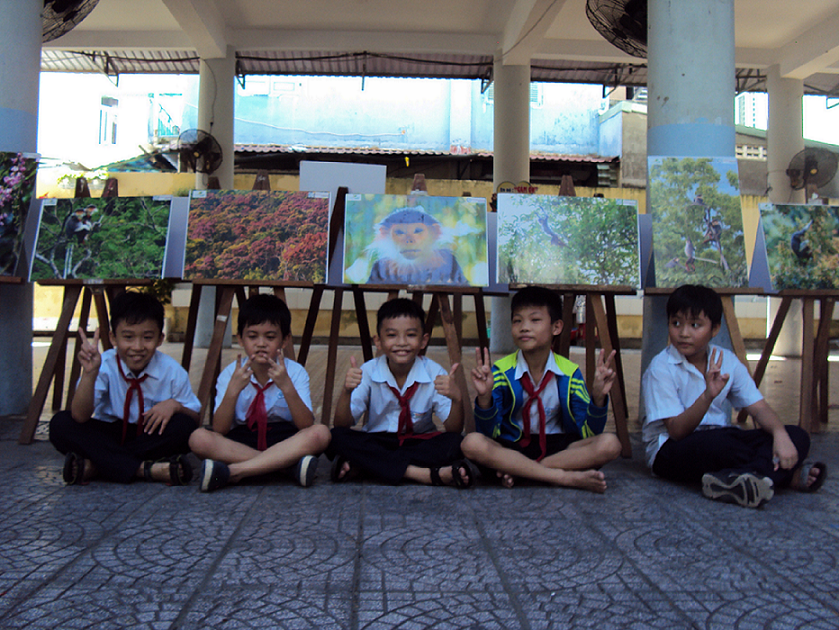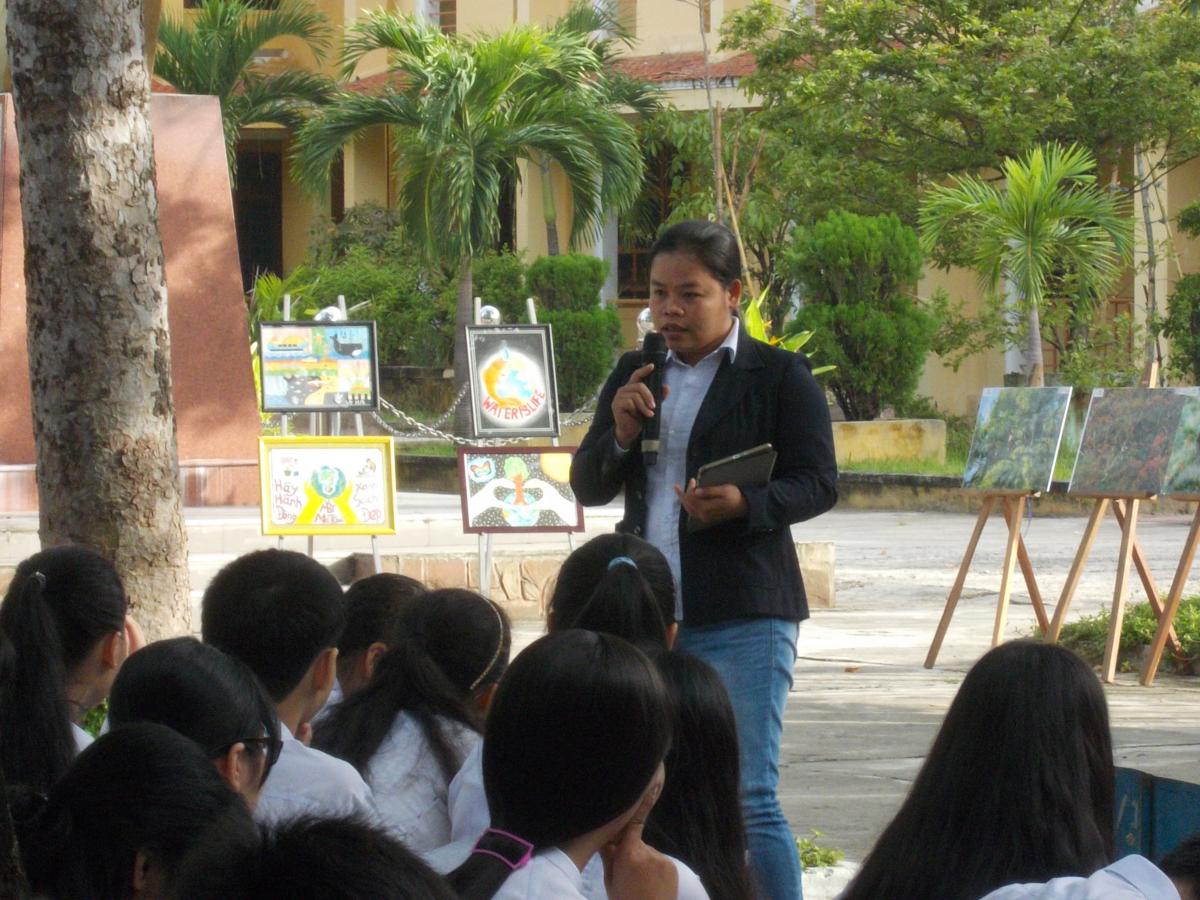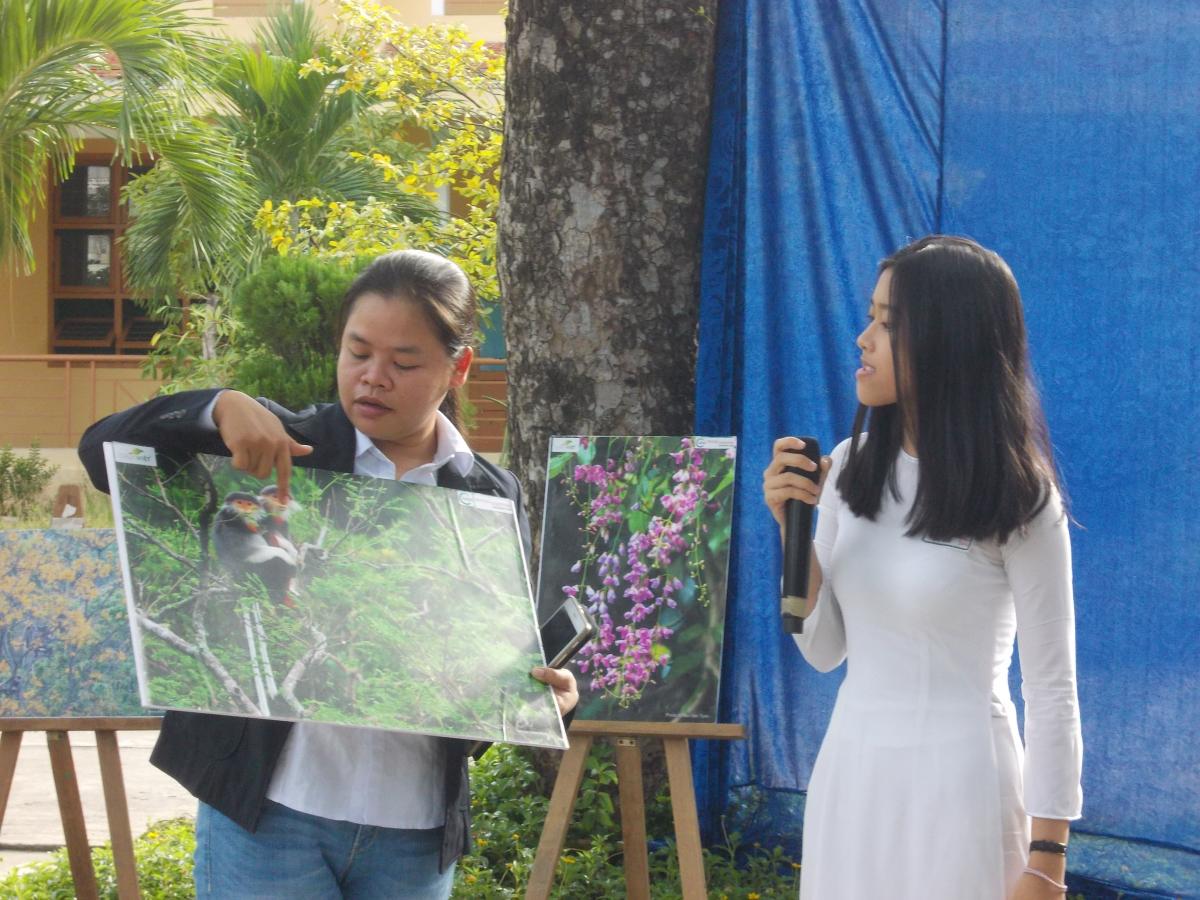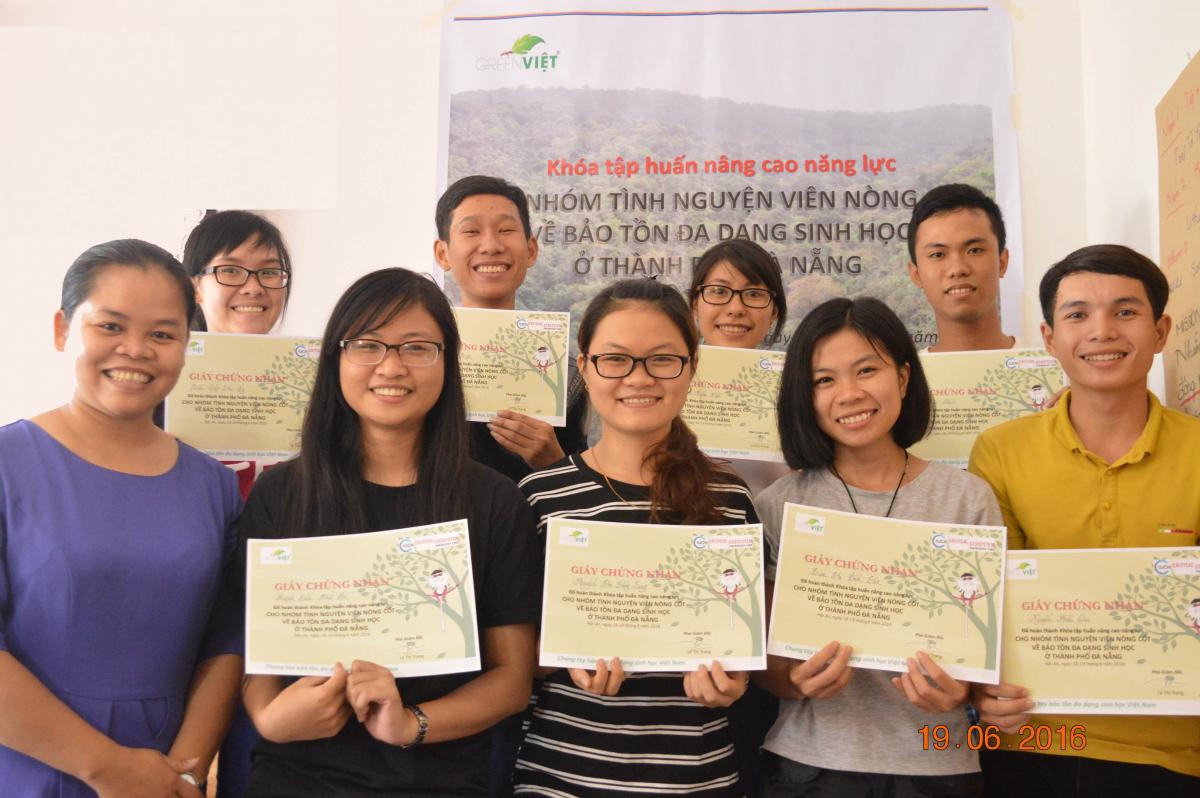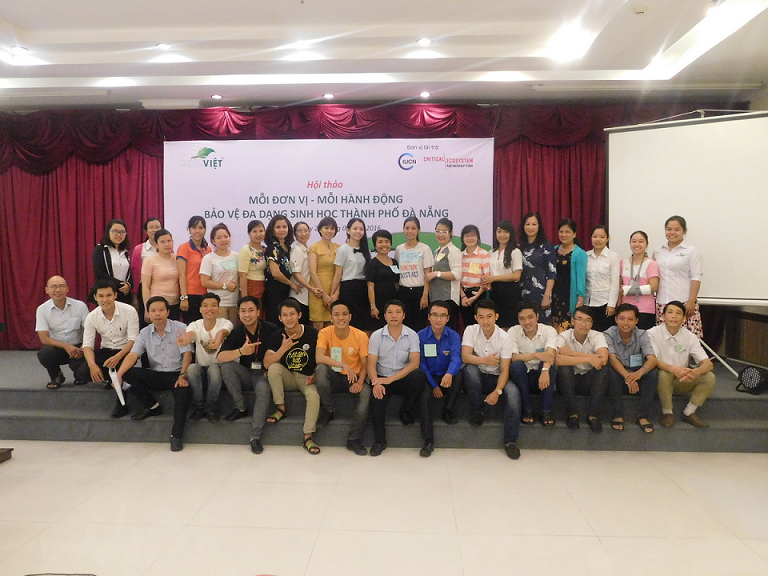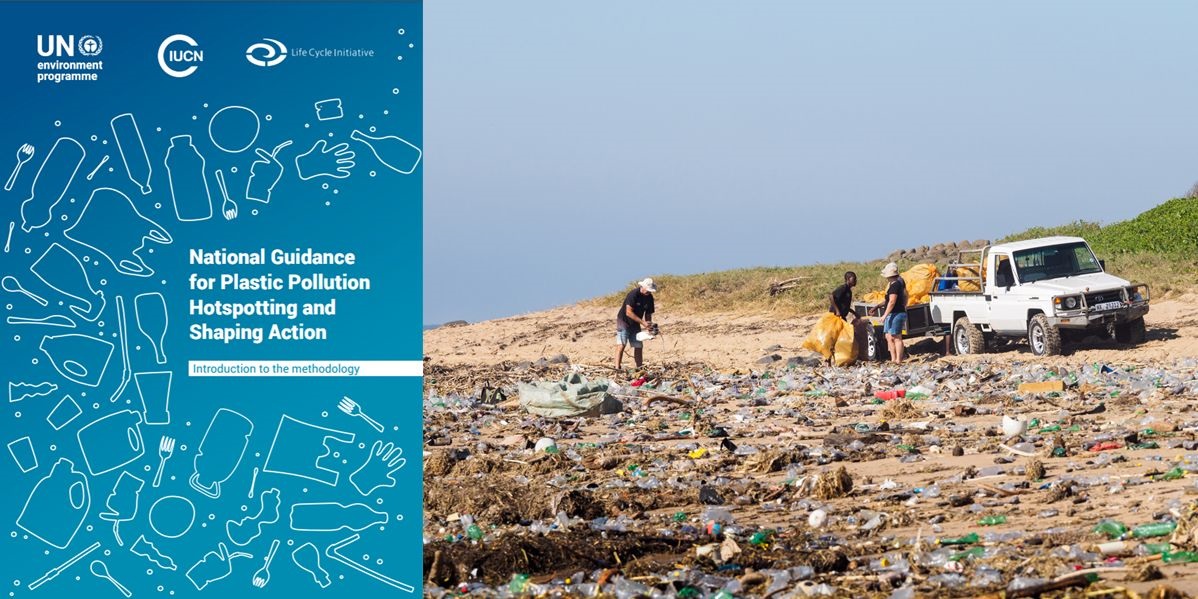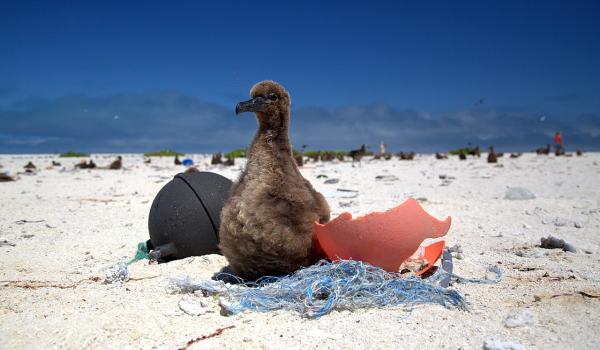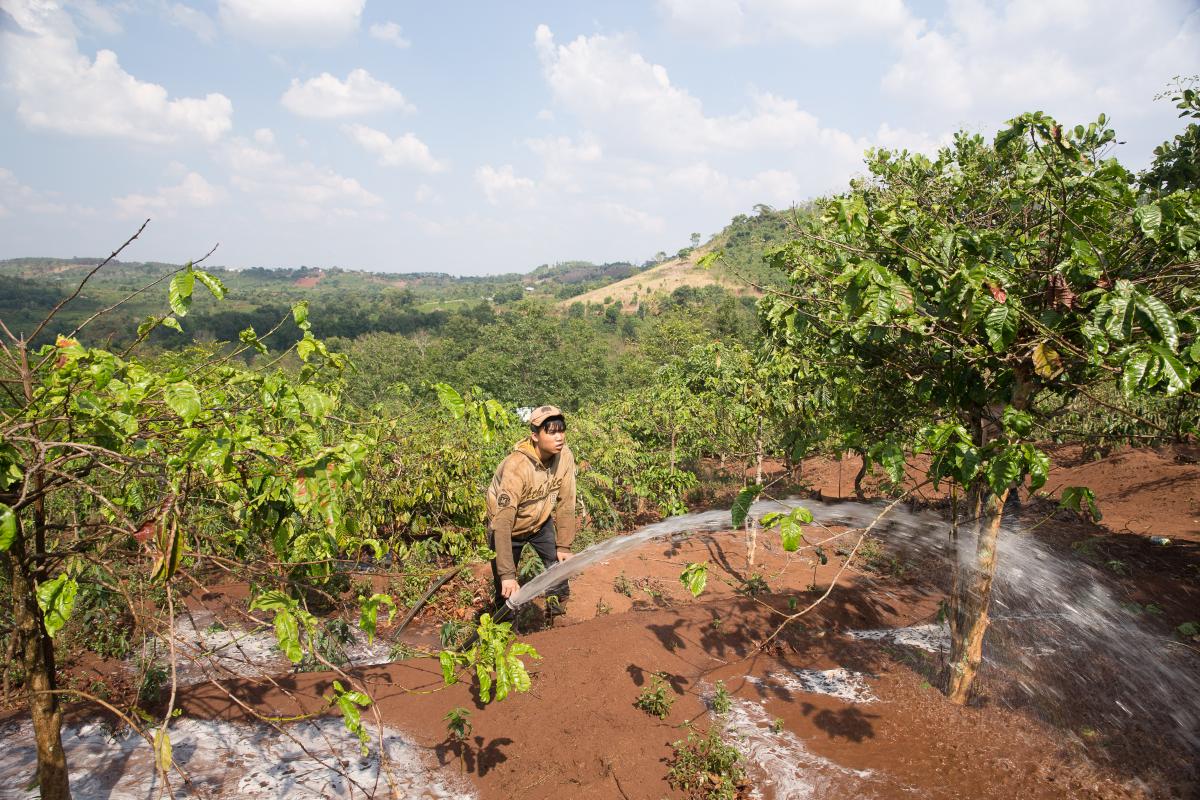Local communities empowered to protect nature in Viet Nam
Da Nang City, the third largest city in Viet Nam, is taking important initiatives to protect nature. Known as the most livable city in Viet Nam, Da Nang is remarkable not only for its policy to become an environmental city by 2020 but also for the fact that its local communities also take a genuine interest in protecting their natural resources.
GreenViet, a local NGO in Da Nang City, has led local communities in wildlife conservation since 2013, particularly through its efforts to protect the Endangered red-shanked douc langur (Pygathrix nemaeus ) in the Son Tra Nature Reserve.
With the stakeholder network that GreenViet successfully built with a previous Critical Ecosystem Partnership Fund (CEPF) grant in 2014-2015, this year, GreenViet with support from CEPF’s grant for “Strengthening the Capacity of GreenViet to Design and Conduct Conservation Projects in Danang”, has cooperated with stakeholders in six districts and two nature reserves to develop and implement different initiatives to preserve local biodiversity.
“We understand that when local stakeholders were empowered to take action in saving their natural resources, they are more likely to change their attitudes and behaviors”, said Ms. Le Thi Trang, Vice Director of GreenViet.
“In this project, besides increasing internal capacity for GreenViet to implement community-based projects to conserve Danang’s biodiversity, we have also raised our capacity to better collaborate with stakeholders in Da Nang, in order to mobilize human resources more effectively, especially when it comes to designing and implementing activities to conserve biodiversity in and around the city. Additionally, we have been able to successfully increase capacity for our volunteer network”.
GreenViet has conducted 10 consultation meetings with local stakeholders in Da Nang to better understand their resources as well as to develop cooperative activities to preserve nature. Based on those meetings, eight stakeholders have signed Memorandums of Understanding to work with GreenViet to implement programmes to conserve nature in Da Nang, including Da Nang Department of Education and Training; Ba Na – Nui Chua Nature Reserve Management Board; Son Tra Nature Reserve Management Board; Da Nang Volunteer Network; Nature Resources and Environmental Office of Hai Chau District; Hoa Vang District; Thanh Khe District; and Son Tra District.
In the four months prior to Viet Nam’s traditional Tet holiday, six programmes have been implemented in cooperation with GreenViet and local stakeholders, directly reaching 15,000 people in Da Nang city. These programmes have targeted several beneficiaries, including local authorities (Ba Na – Nui Chua programme), primary school children (Hai Chau and Hoa Vang programme), teachers (Son Tra District programme), secondary and high school students and teachers (Education Department programme), and Da Nang youth and public (Thanh Khe programme).
The red-shanked douc langur in Da Nang city has been used as flagship species through all cooperation programmes. For the 2017 Asia-Pacific Economic Cooperation (APEC) Summit that will be held in Da Nang this year, the city has released a plan to promote its success in preserving the red-shanked douc langur as an example of community engagement and empowerment in nature conservation.
Founded in 2000, the Critical Ecosystem Partnership Fund is a global leader in enabling civil society to participate in and benefit from conserving some of the world’s most critical ecosystems by providing grants for organisations to help protect biodiversity hotspots, Earth’s most biologically rich yet threatened areas. CEPF is a joint initiative of l'Agence Française de Développement, Conservation International (IUCN Member), the European Union, the Global Environment Facility, the Government of Japan (IUCN State Member), the MacArthur Foundation and the World Bank.
IUCN is leading the second phase of CEPF's work in the Indo-Burma hotspot, working together with the Myanmar Environment Rehabilitation-conservation Network (MERN) and Kadoorie Farm and Botanic Garden (KFBG) to form the CEPF Regional Implementation Team (RIT).
